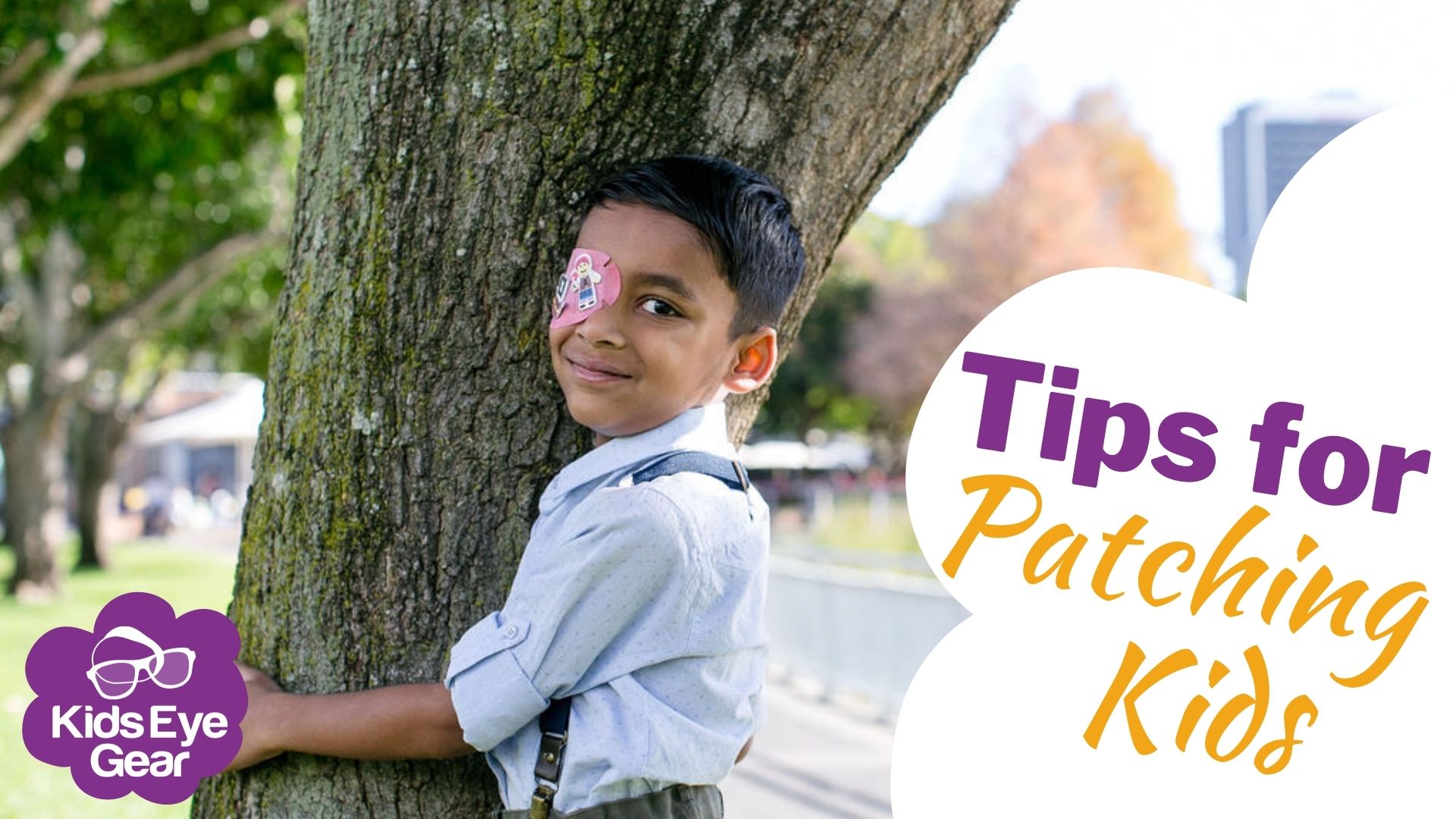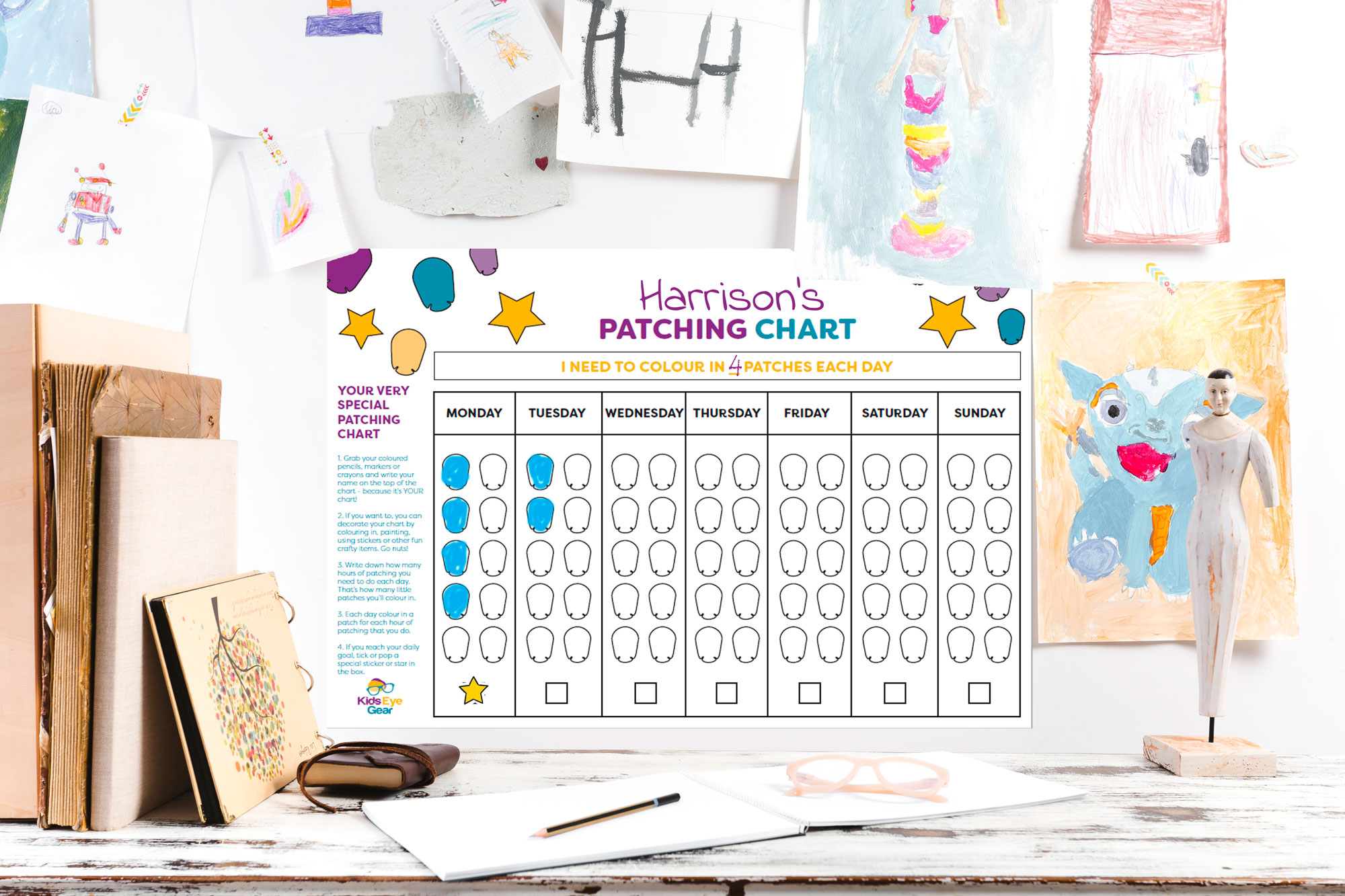Tips for patching kids
3rd Mar 2023

“My kid won’t keep their eye patch on – help!”
“Can anyone help me with tips for patching my child?”
Every phase of childhood can bring its own delights – and also its own challenges. Throw patching and wearing glasses into the mix and it’s a whole new level!
Once you’re past the toddler stage, kids aged 4+ can either be super easy to patch – or extremely difficult. Being that little bit older, they start to notice other people looking at them and questioning why they have be different from other people and patch their eye.
We started our son Dane’s patching when he was 7 months old but continued until he was 5 – so there was plenty of patching done up until halfway through Prep! I’ll be honest and say we were fortunate that Dane was really good about patching most of the time but I think a lot of that came down to the expectations, routine and consistency that we had established from day one. But in all honesty, I found the 4-5 age bracket the absolute hardest for patching. He was naturally pushing boundaries and of course that extended to patching as well. Once we began our ‘weaning’ off patching, it was even worse. ‘What’s one hour going to do Mum, can’t I just give it a miss today?’, ‘I promise I’ll patch this afternoon Mum’ and ‘Today’s just not a good patching day Mum’ were pulled out on the regular.
So after five years of patching, and eight years of helping customers with their own patching journeys, here are my top tips for patching a child from age 4 up.
1. Find a patch that works for you – but beware of cheating!
Fortunately for parents there are now quite a lot of options when it comes to patches, this certainly wasn’t the case when we started patching, which is why we started Kids Eye Gear!
When it comes to the type of patch, you basically have two options – adhesive or fabric. Adhesive patches stick like a Band-Aid to the skin, while fabric patches typically go onto glasses, although there are a few that operate like a ‘pirate patch’ on a band.
By age four, there’s a chance your little one might be wearing glasses, so a fabric patch could be an option. If they don’t wear glasses and your doctor gives the okay for a fabric patch, you can buy a pair of cheap sunglasses and pop the lenses out – then put the patch on the sunglasses.
A word of warning about fabric patches though – they can be easier to ‘cheat’ so you need to make sure your child cannot see around, above or below the fabric patch, or that they don’t let their glasses slide down their face so they’re looking over the glasses.
2. Routine, routine, routine
Now that you’ve found a patch that works for you, it’s time to get down to business with getting your patching hours in. A great way to do this is to establish a routine. At this age they’ll now be pushing boundaries big time, so setting expectations around patching time is really important. Have a set time each day that patching is going to take place. If it needs to change depending on kindy, school or other activities, draw up a schedule so they can see exactly when it’s going to happen.
3. Distract, distract, distract
Keeping your child busy while they patch can keep them distracted from the fact that they have one eye covered. Head to the park, go for a walk, have a bunch of toys and activities that are only available when it’s patching time, keep the iPad exclusively for use while patching, get out the finger paints. Basically whatever is going to keep them occupied and not thinking about the patch will help.
There’s a bit of debate about whether kids should patch while they’re at daycare or kindy but we always found it very beneficial. There’s so much going on while they’re in care that they’re easily distracted and patching time flies by. School can be a different kettle of fish though. Some kids and school environments are very encouraging and accepting of patching kids, while others can result in taunting and teasing, so make this decision based on what sort of environment you’re in.

4. Set a timer
If a child understands that the patching is for a finite time – and not necessarily ALL DAY – they can often be more compliant. So set a timer on your phone that they can see countdown, have a toy clock that shows the time or clock hands of when they can finish patching, have a sand timer so they can see the time disappearing. Time is an abstract thing when you’re little so showing them visually how they’re going can be really helpful.

5. Patching Reward Charts can help
At this age, kids are old enough to understand reward charts or incentives for their patching time. If they patch for an hour they might get a lolly, or if they fill out a whole week’s worth of patching they might get a new book or a trip to the shops for a babycino. Just like the timer philosophy, reward charts can help the child visualise their success. Check out our free Reward Charts.
Patching a child can be an absolute nightmare, no matter the age. A lot will come down to the temperament of your child (we have always been grateful it was our son and not daughter that had to patch – that would not have been easy!). There’ll be requesting, negotiating, demanding and threatening – and that can all be on the one day. Just remember you’re here for the long haul, so do the best you can each day but don’t stress if you have a really bad patching day. It happens to everyone. Hang in there and know that you’re doing your very best for your kiddo.

